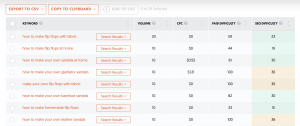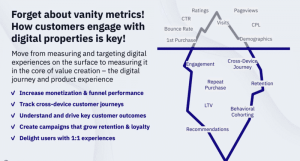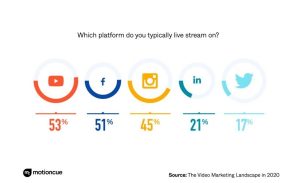Nearly a third of digital marketers reply completely on big data when making decisions according to Forrester’s latest survey.
As marketers, we strive to design customer experiences that leave lasting impressions, drive conversions and keep our customers coming back for more. But do we rely too heavily on big data instead of honing in on the specific actions that drive customer engagements?
A recent report from Forrester commissioned by customer insights software firm FocusVision surveyed over 500 U.S. consumers to describe what they thought and felt was a truly memorable customer experience and the specific elements of the component that made it memorable. Forrester also surveyed over 200 B2C marketing decision-makers, including 54 CMOs, to gain insight into what methodologies they use to understand their customers.
The report defines big data as a “combination of structured and unstructured data, including log files, transaction information, internet of things, social media metrics, etc.” It defines small data as “a combination of VOC data, customer journey data, user focus groups, surveys, behavioral user experience data, etc.”
Small data unlocks the “why” behind customers’ actions
Over-reliance on big data is a common trend, according to the report findings. When asked if their customer experience strategy and execution was informed more by big data or by small data, nearly a third (29%) of the respondents said they rely “completely” on big data when making decisions.
Looking only at big data often leads digital marketers to convoluted customer insights and challenges in terms of understanding the drivers behind customer actions. More than half of the brands surveyed agreed or agreed strongly that small data is critical to unlocking the thoughts and emotions behind the actions customers take.
Forty-one percent of brands using small data strongly agreed they know why a customer chooses to purchase from them versus those who don’t. For brands not using small data, this number drops ten points to only 31%.
Digital marketing and business intelligence teams operate in silos
Additionally, the report found that marketing and business intelligence teams are communicating, but not effectively. The two groups are often siloed despite their heavy reliance on one another for day-to-day operations. These disparities in communication can lead to a breakdown across marketing strategies — when marketing is not adequately equipped with detailed insights, optimizing campaigns to meet customer needs will continue to be challenging.
Having a contextual background for your customer data — big or small — is a crucial success factor for digital marketers leveraging data to drive business decisions and further invest in martech. The context of your customers’ actions that is provided by the business intelligence group will tell you more about a customer’s decision-making process than merely looking at the big picture of whether or not a customer made a purchase.
Deeper insights deliver improved customer engagement
To eliminate the silo-factor between teams, marketers should meet regularly with their business intelligence team to review data findings and gain a deeper understand behind the insights they are given. Understanding these insights on the engagement level will help digital marketers better understand how to engage with customers effectively and drive bigger returns.
Big data will continue to be important, and business leaders and organizational stakeholders will continue to depend on it for broad-level insights into business outcomes and trends. But, marketers need to prioritize small data for day-to-day marketing decisions. By working closely with customer insights or business intelligence teams, digital marketers can gain a holistic, detailed view of their customers that delivers increased customer engagement and, ultimately, more conversions.
Marketing Land – Internet Marketing News, Strategies & Tips
(92)
Report Post








